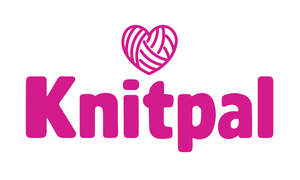
Your Must-Know Yarn Terminology
When you're just starting out knitting or crocheting, and walk into a yarn store, all the terminology you're suddenly confronted with can be very daunting. But don't worry if you're not sure what the difference between double knit and double knitting is - we've all been there! And that is why we've compiled this handy and easy-to-follow terminology list.
- Ballband — the wrapper around a ball, skein or cake of yarn that details its make, fiber content, weight, gauge, etc.
- Ball-winder — a device used to wind hanks of yarn into balls or cakes. It can also be used to make a double-stranded yarn.
- Blocking — A process during which a finished piece of knitting is set in place through the use of steam or by dampening the finished piece. Blocking usually doesn’t make that big a difference in acrylic yarns, but blends and especially natural fibers like wool gain a lot of definition when blocked. Blocking makes use of blocking mats and blocking pins.
- Blocking wires - thin wires that are used to stretch a piece of lace knitting while blocking to ensure that the pattern shows optimally.
- Cable needle — a needle (usually double pointed) and with a kink in it that is used when knitting cable patterns.
- Circular knitting needles (”Circulars”) — Circular knitting needles consist of a pair of short knitting needles that are connected by a flexible cable of differing lengths. Circulars are used for knitting in the round, but can also be used to knit socks and to knit wide items, like shawls, that don’t fit on straight needles.
- Double Knit (DK) — Double knit is a medium-weight yarn that is also called light-worsted or 6-ply yarn. It’s suitable for most projects like sweaters, scarves, blankets and toys.
- Double pointed needles (DPNs) — Short knitting needles with a point at each end, these DPNs are used for knitting small circular items like socks and mittens.
- Double Knitting — Also called double-sided knitting and tubular knitting, it’s worked on straight needles by slipping every other stitch. It produces a beautiful, double-sided fabric.
- Gauge swatch — The gauge swatch is very important, as this is the “tester” you make before you begin your main project. This is done to measure how many stitches and rows are needed to make a 4” sqaure of knitted fabric. The gauge you knit in must match that of the pattern you’re making to ensure that it end up being the correct size.
- Hank — A twisted ring of yarn that must first be wound into a ball or cake using a ball-winder (although it can also be done by hand), before it can be used to knit or crochet with.
- Knitting needle gauge — A very handy little tool, it contains various holes through which specific sizes of knitting needles will fit. They are used to identify the size of needles that no longer have their size printed on it because, for example, it has worn off through use.
- Lace yarn or lace weight yarn — Also called fingering or 2- or 3-ply, that is mostly used for knitting lace.
- Mercerized cotton — This refers specifically to cotton thread, fabric or yarn that has been treated to not only strengthen it, but also to hold a sheen. Most crochet cottons are mercerized.
- Pilling — The name given to the tiny balls on the surface of a knitted item that is caused by wear and friction.
- Plied yarn — Plied yarn refers to yarn made from more than one strand of spun fiber. Therefore, 4-ply yarn is made from four of these strands plied together. Most yarns are plied to help prevent the yarn from twisting and letting the fabric slant diagonally.
- Skein — A skein refers to yarn that is sold wound into an oblong shape and that is ready to knit.
- Sock blockers — Sock blockers are flat plastic or wooden shapes that is put into completed socks to mold it into shape while the yarn is damp.
- Sock stoppers — Sock stoppers are the plastic caps used on double pointed needles to keep the stitches from falling off the needles while you are not working on the project.
- Swift — A swift is a wooden frame that is used with a ball-winder to wind hanks or even skeins of yarn into more manageable balls or cakes.
- Worsted yarn — Also called Aran yarn, afghan yarn, or 12-ply, this medium thickness yarn is, like DK yarn used for a wide variety of projects.
- Yarn bobbins — A must-have for those who are busy doing intarsia work and need to switch between colors often.
Now you can go and explore the new world of yarn that has opened before you with confidence!
Comments
Hi, My brother bought a sweater in New Zealand, 30 yrs ago. I’ve repaired several times. He said it was made from " Unwashed Wool" very thigh, a little smelly. He told me it shouldn’t be washed. To keep the warmth in. He’s a ski instructor. I think it was bought in a fishing town. My question, what kind of wool might it be? Thanks for your help. joy

